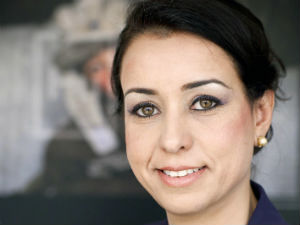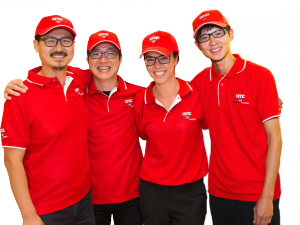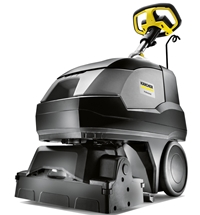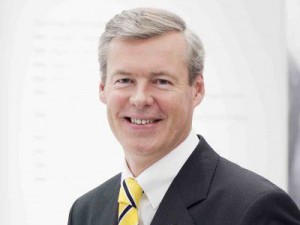
Something is in the air – trends to expect in 2024
Cleaning companies and facility managers must respond to a range of opportunities and challenges in the next 12 months as they seek to gain an edge in complex markets.
As leaders weigh up the key issues facing the cleaning industry in 2024, some familiar terms will no doubt emerge – cleaning for health, sustainability, and diversity, equity and inclusion among them.
Dr Gavin Macgregor-Skinner, senior director of the Global Biorisk Advisory Council (GBAC), a division of ISSA, the worldwide cleaning industry association, welcomes any discussion of such concepts, but hopes the nuances around them will become more sophisticated next year.
Cleaning for health must go to the next level as industry players embrace best-practice cleaning protocols and procedures as a way of mitigating exposure to pathogens.
Sustainability should evolve from the simple recycling of plastic packaging to true product innovations that facilitate non-toxic, safe and low-cost practices. Likewise, diversity, equity and inclusion should be seen as a positive chance to tap into a deeper talent pool and promote workplace cultures that enhance the reputation of cleaners as essential workers, rather than creating a backlash over recruitment strategies.
“Predicting the trajectory of diversity, equity and inclusion initiatives is challenging, but they should all be focused on growing the success of the cleaning industry and cleaning companies,” Dr Macgregor-Skinner says.
Such big issues will by no means be the only talking points in 2024. Following are some of the other topics that are likely to dominate the agenda.
Indoor air quality
The time has come for less talk and more action on indoor air quality (IAQ) in buildings, according to Ivi Sims, co-founder of BULCS Holdings, a distributor of IAQ, ventilation and building restoration solutions.
She hopes 2024 will be a breakout year as more organisations, including smaller businesses, embrace better ventilation, air-purification and HEPA systems to improve air quality, while also seeking out readily available tools to properly measure IAQ. “There’s been a lot of talk about air quality in the past couple of years, but responses have been quite ad hoc,” Sims says. “But now we’re seeing some more proactive implementations of better ventilation systems in indoor spaces, which is a positive.”
Sims is also emboldened that a key industry player, the Australian Research Council (ARC) Training Centre for Advanced Building Systems Against Airborne Infection Transmission, is ramping up research with the aim of reducing airborne infection transmission.
The ARC has been a strong advocate for a ventilation revolution, noting that every year acute respiratory illnesses result in more than 2.7 million deaths globally and billions of dollars in economic losses.
While some businesses have expressed concerns about the costs associated with improving IAQ, Sims believes a more coordinated and proactive approach – rather than kneejerk responses to government rules – can lead to better and more cost-effective outcomes for facility managers. “There’s a lot of wasted spending with reactive measures,” she says. “If we can take proactive measures, we can actually save money in the long run.”
Brant Insero, chief global education officer at ISSA, has no doubt that IAQ will “become one of the single-most important topics when it comes to cleaning for health in the built environment”.
“Ensuring that everyone understands how harmful pathogens are transmitted within the air and how to mitigate that risk will become critical to showing the value of cleaning for our communities,” he says.
While IAQ has in the past been an afterthought, Insero says one of the key takeaways from COVID-19 and influenza outbreaks is that most people contracted COVID-19 from airborne transmission, followed by surface transmission. He adds that the catastrophic wildfires in Canada this year also put the focus on air quality and have prompted many government agencies in North America to implement new IAQ regulations. “This should spill over to Australia and will be a long-term trend, not specific to just 2024.”
Healthy buildings
IAQ initiatives and cleaning-for-health training will be key components of momentum towards healthy buildings in 2024, according to Dr Macgregor-Skinner.
“Healthy buildings, healthy people – this is the vision,” he says. “The built environment is crucial to human health. In the US, indoor pollution is estimated to cause thousands of cancer deaths and hundreds of thousands of respiratory health problems each year. In addition, hundreds of thousands of children each year experience elevated blood levels resulting from their exposure to indoor pollutants.”
As custodians of safety and health in the built environment, Dr Macgregor-Skinner says cleaning businesses must understand the reservoirs for germ survival and spread. To that end, they must clean for health, not just appearance or smell, through high standards that focus on the right procedures, training, equipment and tools. He believes a science-based approach to cleaning and facility management is required.
“Until we understand the science behind cleaning, we cannot be a sustainable industry.”
Education will be crucial, therefore. Dr Macgregor-Skinner says that of the participants at the 55 Cleaning for Health workshops that GBAC and ISSA ran this year, 87% had not participated in any sort of training activities in the past five years. About 95% could not name the active ingredients, except water, in the cleaning products they used.
“I draw an analogy with electricians,” Dr Macgregor-Skinner says. “If an electrician didn’t know what fuse they were going to use in a fuse box, what would happen? It’d fail. So, if a cleaning professional doesn’t understand that a cleaning product has certain ingredients and uses something that’s dangerous to the environment, that’s a real concern.”
In line with a focus on healthy buildings, Oceania manager for ISSA Lauren Micallef also expects sustainability and environmental, social and corporate governance (ESG) issues to be firmly on the agenda in 2024, with strict regulations putting the pressure on cleaning companies to avoid greenwashing. “There is no doubt that companies have to be held accountable for their claims,” Micallef says.
At the same time, they will be juggling staff shortages, wellbeing and career support for employees and striking a balance between playing their part in delivering healthy buildings while keeping down facility management costs.
“That’s going to require higher-level conversations with clients when it comes to assessing the value of cleaning,” Micallef says.
Insero agrees that cleaning for health is “a consistent trend that may increase based on customer demand”. Given the high turnover of staff in the cleaning sector, he expects front-line certification programs to be crucial in the education space.
Although it is not a training program as such, Insero says the ISSA Cleaning Industry Management Standard Certification (CIMS) Green Building standard – a designation offering cleaning organisations a certification that establishes their capability to assist customers with achieving a greener clean – will dominate the global certification market for the cleaning industry within the next few years.
“Businesses should jump on this now,” he says. “It takes time to achieve the certification and being able to say that you are part of a community that represents less than 1% of the leading companies in the industry is something to hang your hat on.”
Recruitment and retention
Although Lorraine Rogic, managing director of Logic Business Resources, hears constantly about staffing concerns in the cleaning and hygiene sector, she wants to flip the discussion on its head in 2024 as cleaning contractors prepare to address recruitment and retention strategies.
“I really think there’s a cultural issue, rather than a staffing issue,” she says. “There are enough people who will apply for jobs, but are you picking the right people for the right reasons? And what are you doing to retain them?”
If businesses can get their culture right, Rogic says they have every chance of minimising staff turnover. “People rarely move for money,” she says. “People move because of other people and because of culture.”
Rogic encourages cleaning and hygiene businesses to move beyond tick-a-box training and complement respected education programs with employee mentoring initiatives. “Why aren’t we coaching?” she asks. “Why aren’t we upskilling? Why are cleaners not being upskilled and mentored into roles that provide a better career path? There’s a lack of people focus.”
While practical and process-based cleaning skills can easily be taught, Rogic says cleaning contractors should seek out and cherish people with soft skills, including highly trained immigrants whose professional qualifications may not be recognised in Australia.
“They can bring real value to an enterprise,” Rogic says.
Melissa Behrend, director of HR on Call, says businesses in the cleaning and hygiene sector will require a two-pronged approach in 2024. “If you don’t want to lose your people, you really need to look at your retention strategies,” she says. “But, if you want to recruit people, you have to make it attractive for them to come to you.”
Behrend advises cleaning contractors and facility managers to address five key points. First, do not ignore the remuneration factor. “For too many businesses, they’ve only got one tangible thing to compare their offering with competitors, and that’s money. With inflationary and cost-of-living pressures, money is still very important.”
Second, to offset the potential over-reliance on wages for recruitment, she encourages creating genuine career paths for workers. “Really invest in your people,” Behrend says. “Giving them the ability to grow and develop is paramount. With a lot of millennials and Gen X and Gen Y, they want a very clear direction on where they can go.”
Third, with the rise and rise of hybrid work, Behrend says there are competing tensions between bosses who want administrative employees back in the office, and staff who crave flexibility in a post-pandemic workforce. “So, it’s all about negotiation between the two sides.”
Fourth, business leaders need to be conscious of employees’ wellbeing needs, especially given new SafeWork Australia regulations that prescribe how businesses must identify and manage hazards and risks to workers’ psychological health and safety, including issues related to mental illness and sexual harassment.
Fifth, business leaders need to understand workplace demographics and different generations and communicate constantly with them. Younger workers often only want to communicate via text, whereas older staff may need face-to-face contact. “Each generation can be very different, so you’ve got to use a multifaceted approach to contacting people,” Behrend says.
Technology
While the growth of robotics, artificial intelligence and other technologies for improved efficiency and effectiveness will continue to be a theme in the cleaning industry, it should not come at the expense of relationships that help businesses innovate and prosper.
Micallef says companies and facility managers should not be adopting “tech for tech’s sake”.
Rather, the key will be to integrate systems that harness the real power of technology, as well as partnering with the right entities that can deliver the best technology and technical support.
“A common fear in the industry is the complexity of technology,” she says. “Therefore, from an adoption point of view, you must ensure that you choose the right partner who is ready and willing to offer technical support when you need it.”
Appropriate training and education that enables people to deploy that technology properly will also be critical. “Technology helps you win business if you know how to use it,” Micallef says.
At its best, AI models can detect and inform cleaning on a needs basis within facilities, which in turn can have benefits such as less use of chemicals, lower costs and better health and safety of workers. However, Rogic say many businesses are feeling confused about the potential role of AI and believes its use in largely physical, hands-on roles such as cleaning may be of limited use in the next few years.
She advises companies to favour technology that streamlines the business, from online booking platforms and finance and contract software to digital communication tools. “You don’t have to start doing dancing videos on TikTok, but using technology to help manage complaints or pay invoices makes a lot of sense,” she says.
On a positive note, Insero says there has been a clear rise in the use of tools to measure data, including IAQ monitors, ATP meters, RFID tags and more specialised tests using DCOF (dynamic coefficient of friction) meters that can determine how much friction exists on wet, level floors when walked on.
“We are becoming data driven,” Insero says. “However, while data-driven decisions are important, the market is becoming increasingly fragmented with devices. Open AI and connectivity options are increasing in popularity, but we have not seen a single-source system that is taking over the world, and many facility managers are becoming overwhelmed by the increase in software systems and tracking tools.”
Insero expects market consolidation to occur. He is also excited at the potential of iris recognition scanning for security purposes in the built environment which can better control access to buildings, track traffic trends in such spaces and offer non-contact and more hygienic identification options for cleaners and other workers. “The power it can unleash to save lives and transform cleaning is amazing,” Insero says.
Looking ahead, Dr Macgregor-Skinner believes cleaning contractors should also be seeking out tools that let them work faster and safer, including devices such as electrostatic sprayers that speed up cleaning and deliver better disinfection results when used properly.
‘Innovative mindset’
As 2024 unfolds, Micallef believes companies that embrace an “innovative mindset” with elements such as technology, product development and client engagement will have an edge.
“It’s all about listening to clients and their needs and adapting existing products,” she says.
As cleaning contractors and facility managers deal with inevitable challenges, Micallef says ISSA will be there to provide education, training and support through webinars, online channels and the ISSA Cleaning & Hygiene Expo. “We want to make sure that we keep the market up to date with the latest information.”
Rather than viewing post-pandemic markets as particularly challenging, Insero urges cleaning industry participants to be bold.
“I see an opportunity for companies to take time, in a post-chaos period like the pandemic, to find global expansion opportunities,” he says. “There are many under-served markets that need help to create healthy environments and which have a massive lack of resources. Expansion globally will be a huge opportunity for many.”
To maximise prospects, Insero suggests engaging with “other like-minded professionals” as a means of developing personally and professionally. “We’re in an extremely supportive community and there is no better place than ISSA to get connected globally. Join councils, attend training sessions, attend trade shows and simply plug into the global cleaning community. There is no better place to be!”
Pitch perfect
Getting contract pitches right in highly competitive cleaning markets will be crucial in 2024.
Robin Hastings, managing director of bid consulting service PitchThis, warns that bidding can consume significant resources, with each pitch potentially costing in the order of $10,000 for larger companies chasing major contracts. Given that many companies lodge about 10 bids per month, the annual cost of pitches could hit about $1.2 million.
“It really does add up,” Hastings says. “So, everybody needs to work out the cost of an average bid and ask themselves, ‘Do we really think we’ve got a chance? Is it worth spending $10,000, or are we better off putting that $10,000 into something that we know we’ve got a great chance of winning?’ ”
Hastings advises companies to keep asking five key questions:
- Should we even pitch for a contract?
- What is the offer?
- Will our bid score well and get shortlisted?
- Have we used document layout to support key messages?
- Do we know why we won or lost?
Hastings says two key elements make for a good bid – a deep knowledge of your prospect or client; and having a clear understanding of their pain points and operational needs. “These elements aren’t readily available on the internet, so you can’t just hand it over to ChatGPT.”
She says the pitch should not be about “pushy sales tactics”, but rather about solving problems for clients. She likes to build pitch templates from scratch and incorporate the prospective customer’s logo and colours into the bid document, along with creating an eye-catching bid layout that portrays the bid and brand in the best light for all stakeholders. The design should create a strong first impression and contribute to readability and key message retention.
Hastings advises targeting one or two major prospects with bids, or a particular sector of the cleaning and hygiene space, rather than trying to “boil the whole ocean”.
“You might say, ‘We’re going to work with hospitals or with government’. Just pick one to start with and be strategic about building up relationships with the right people. The more that you can demonstrate that you understand their issues and that your solution matches their issues, the less you compete on price.”
Comment below to have your say on this story.
If you have a news story or tip-off, get in touch at editor@incleanmag.com.au
Sign up to INCLEAN’s newsletter.





